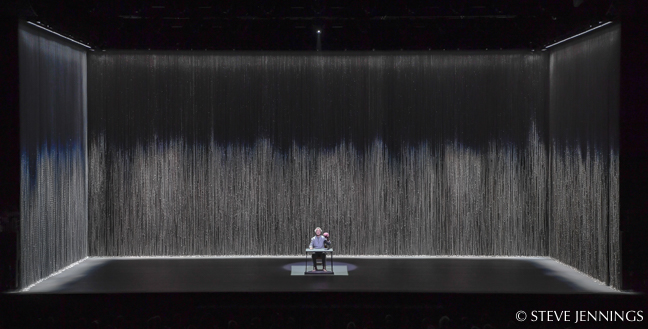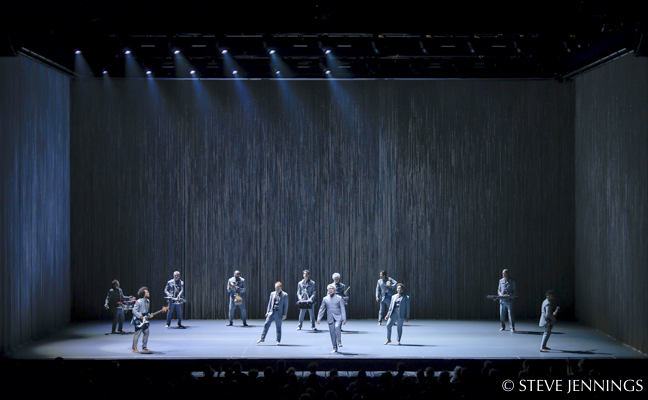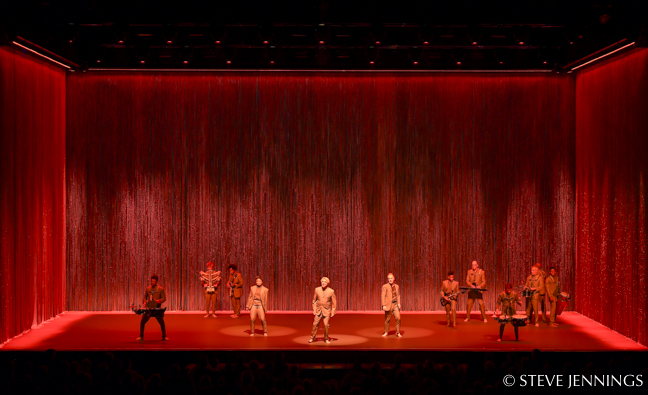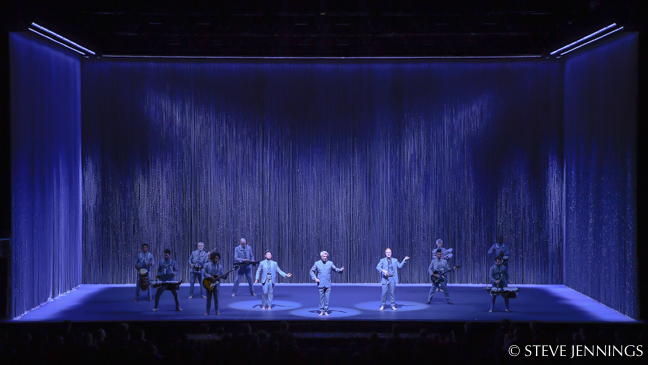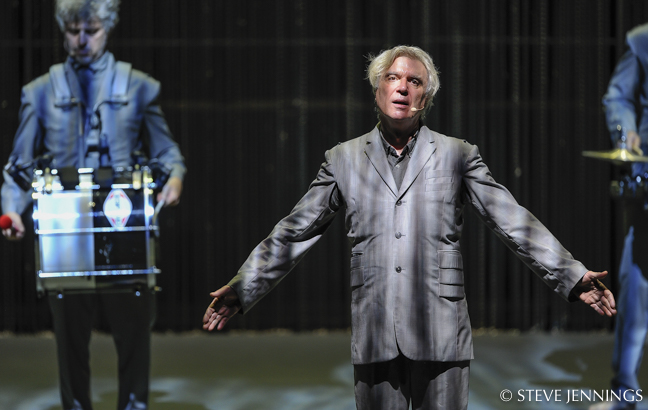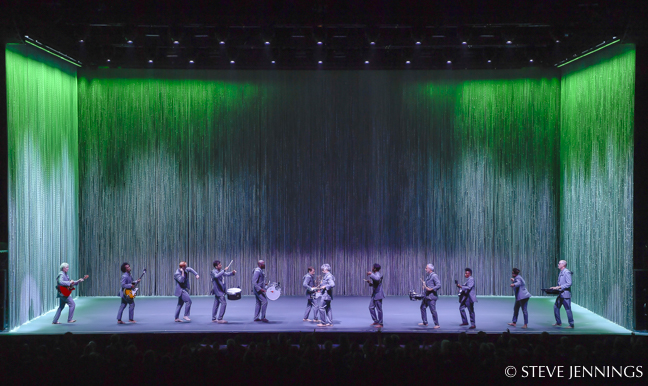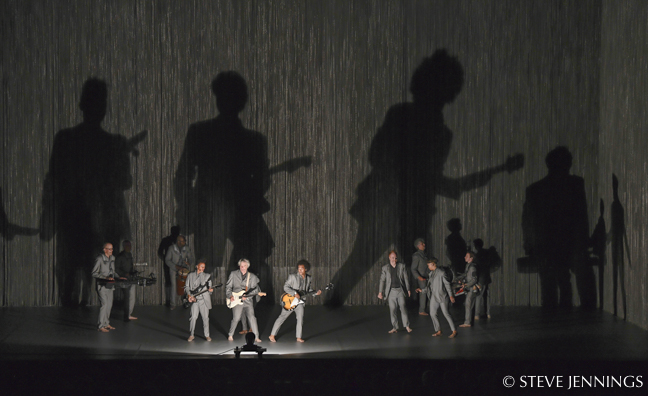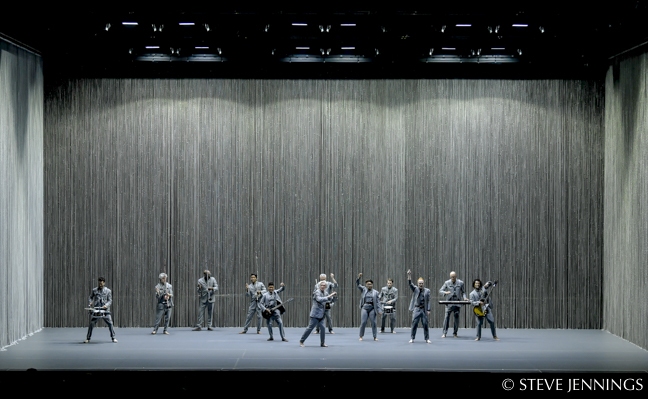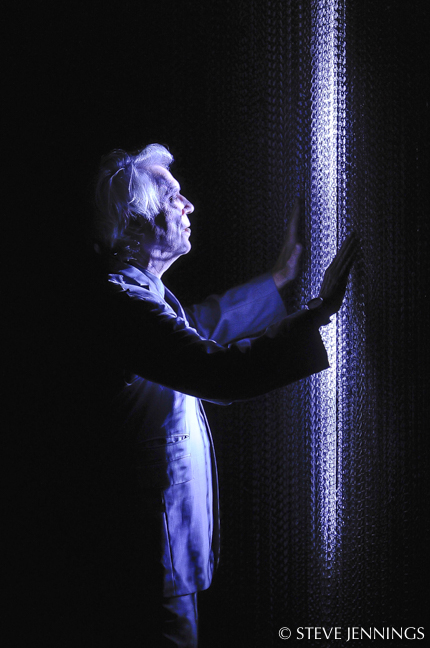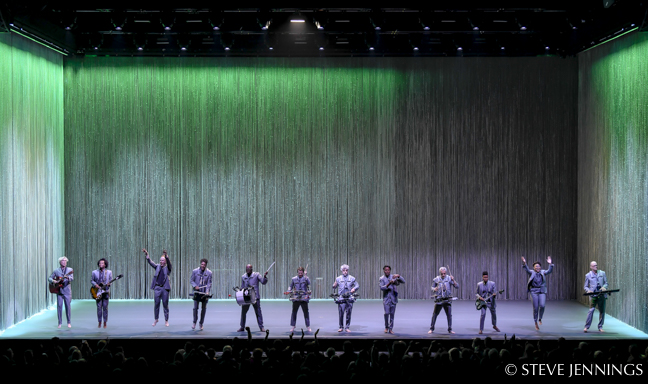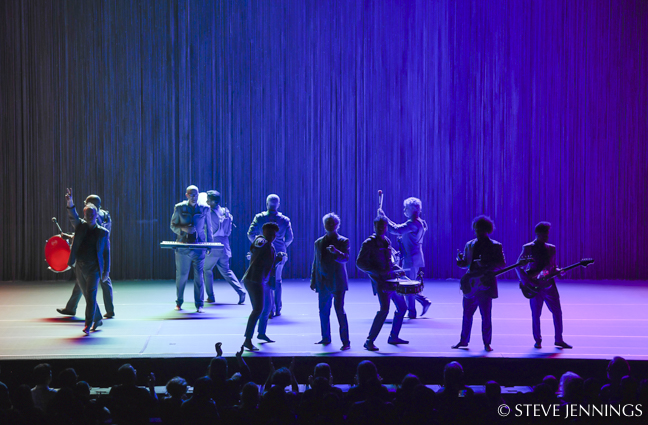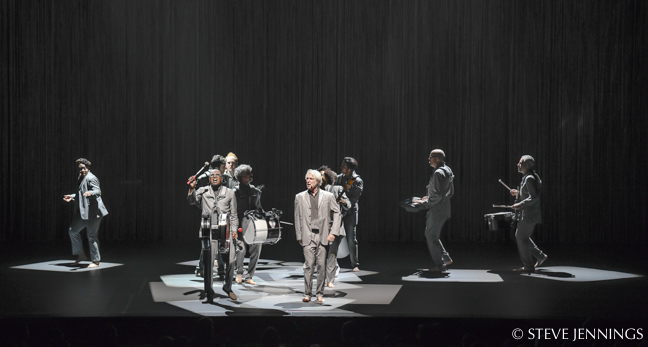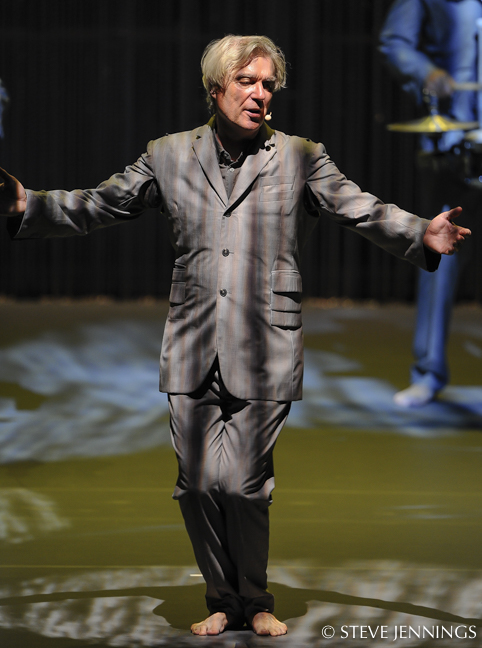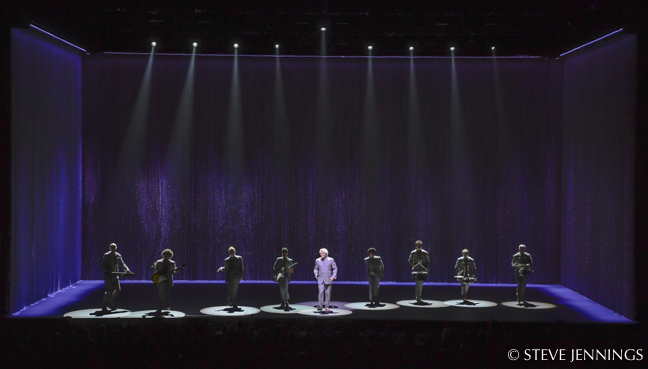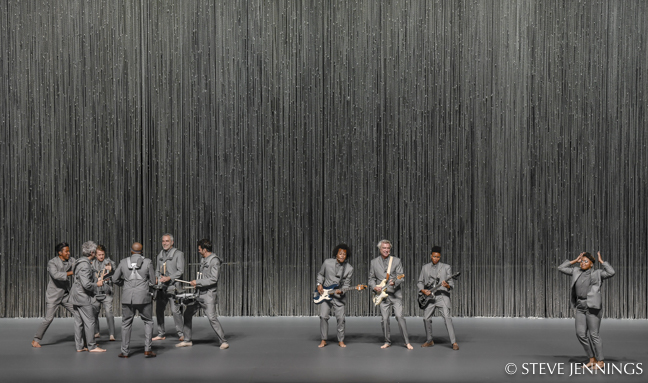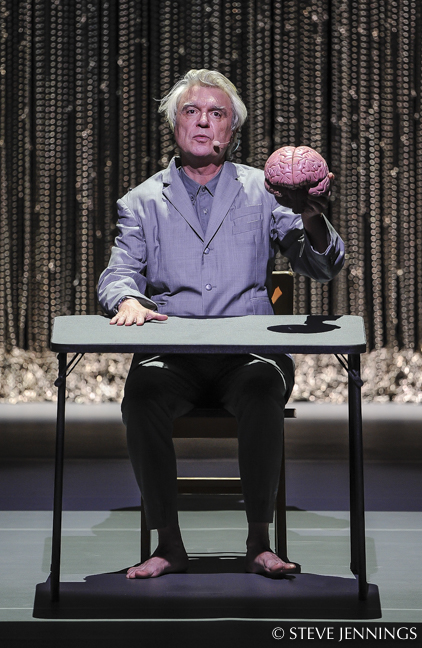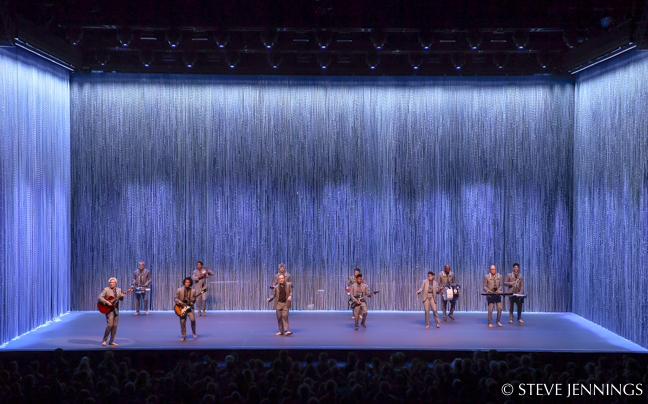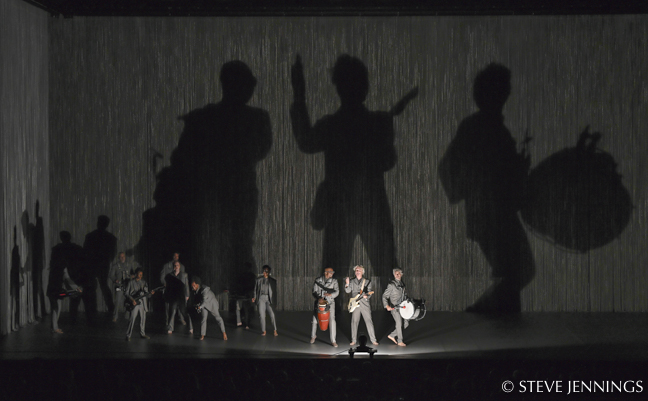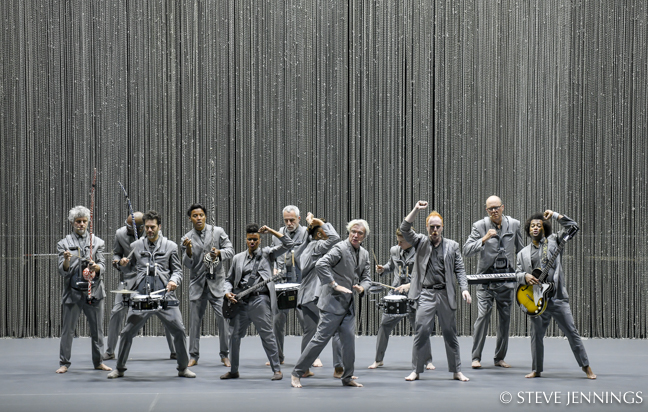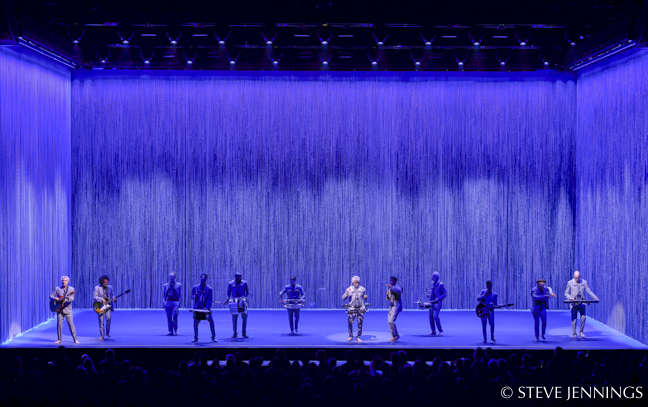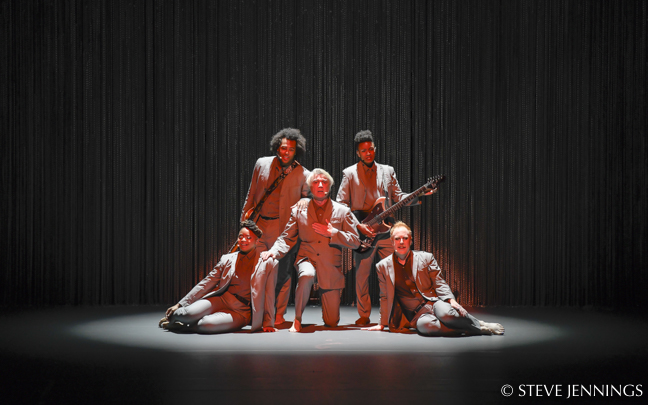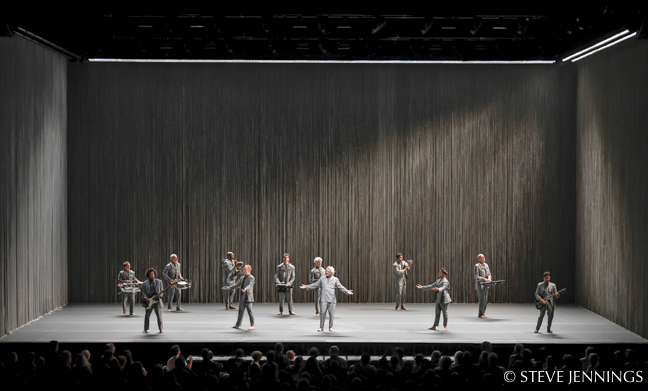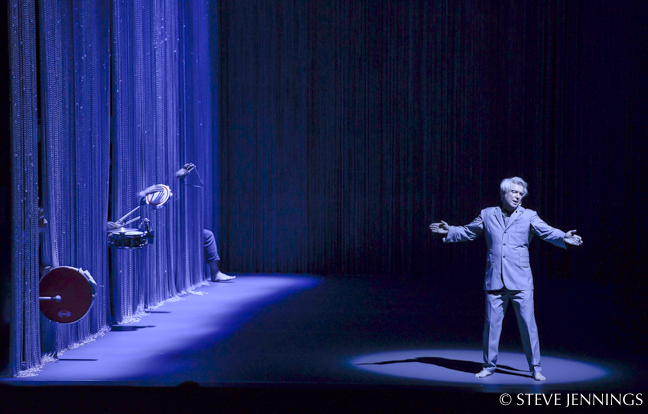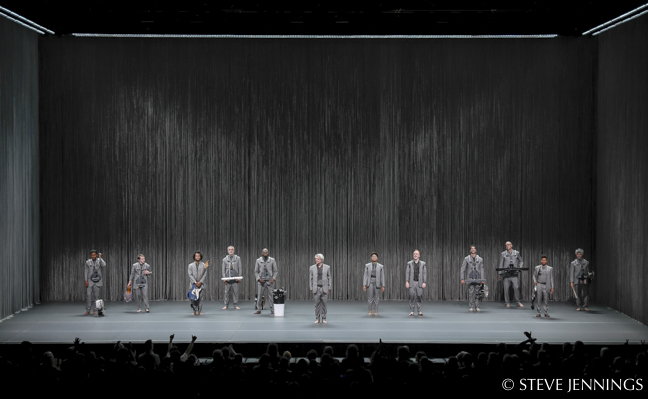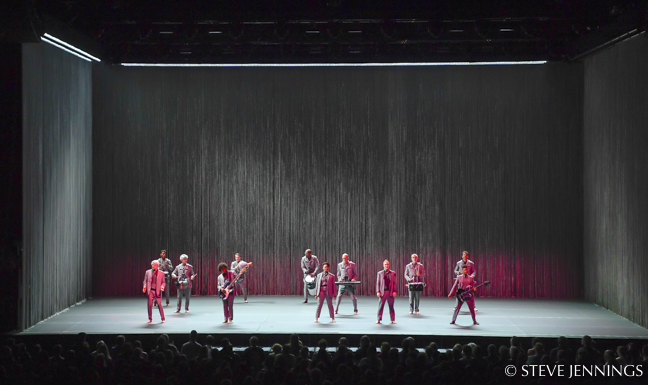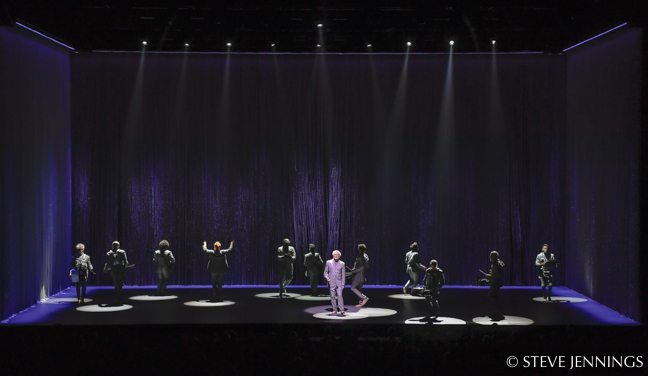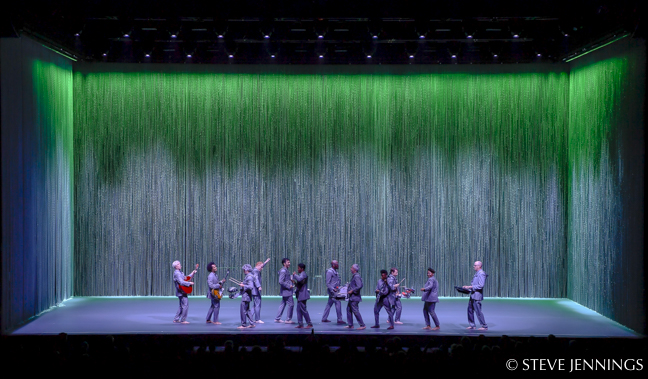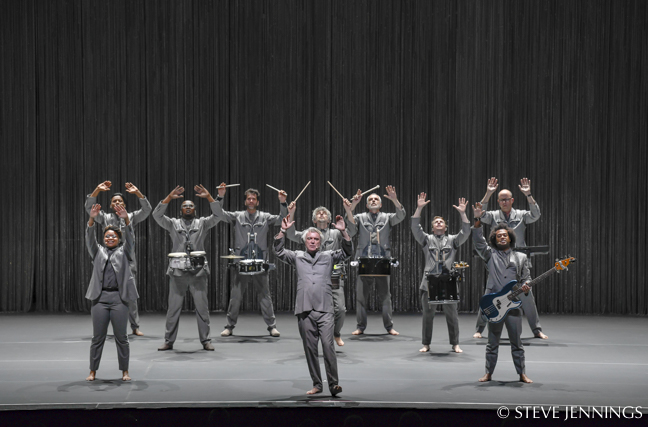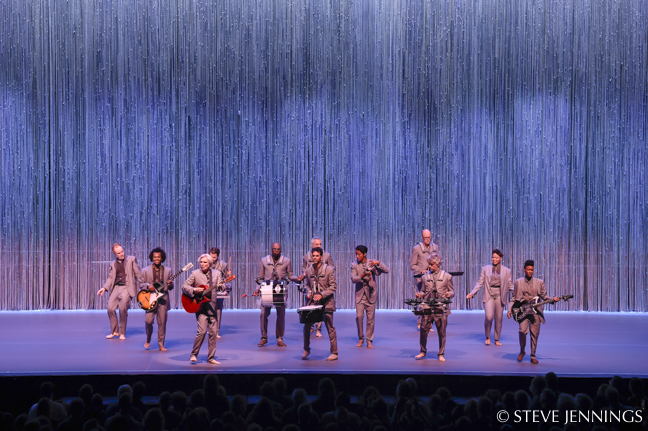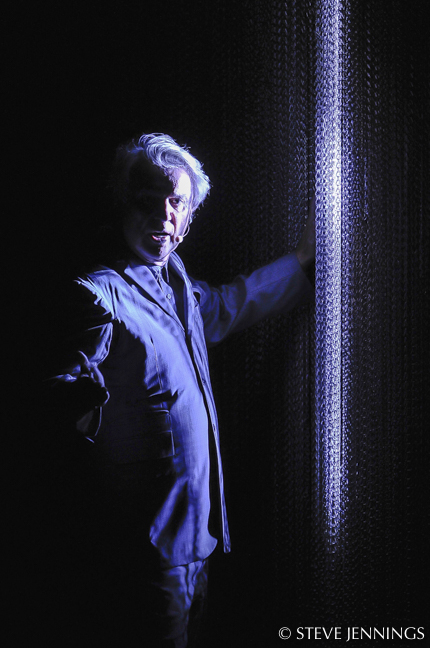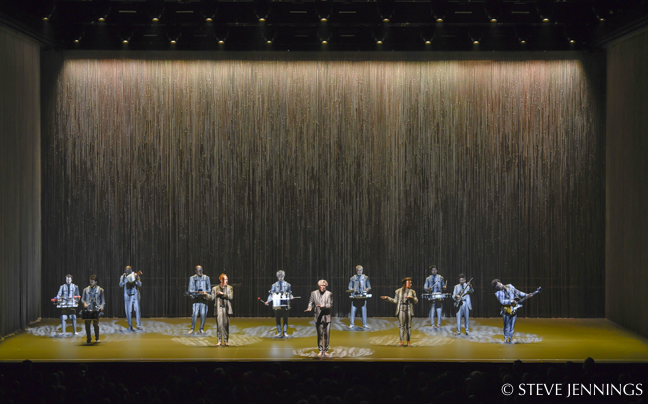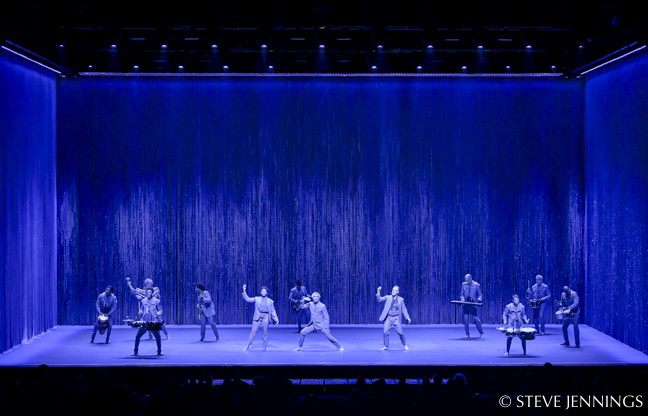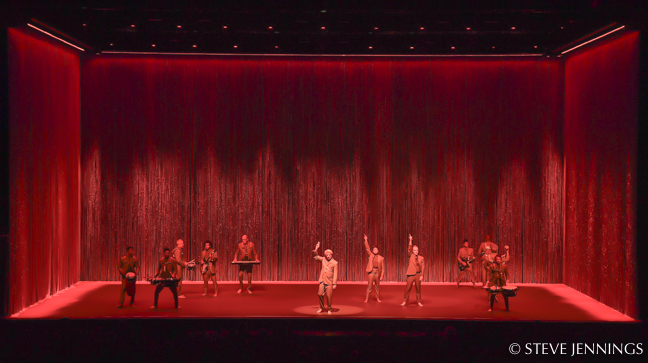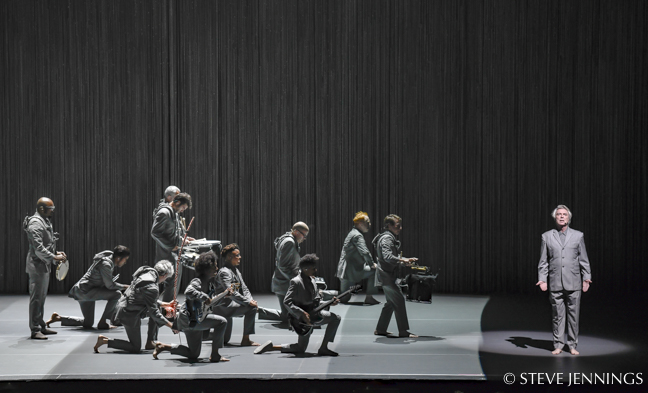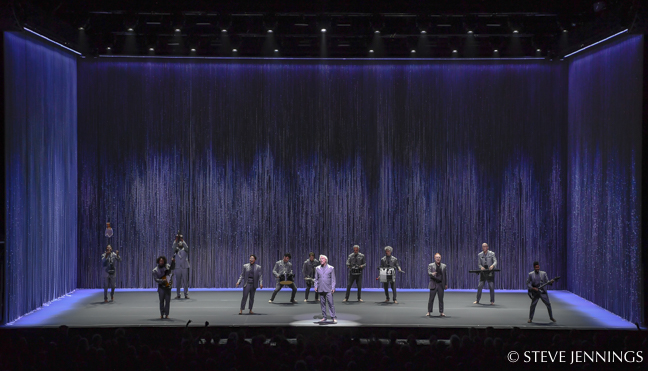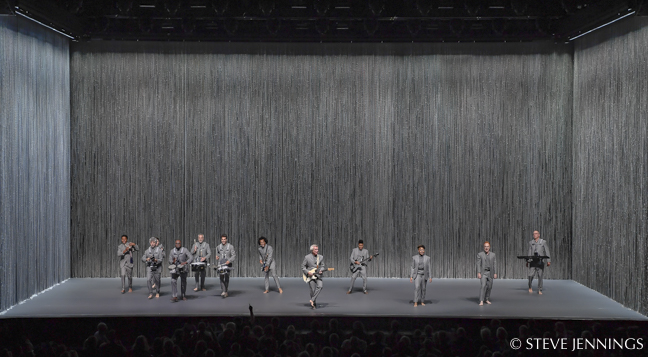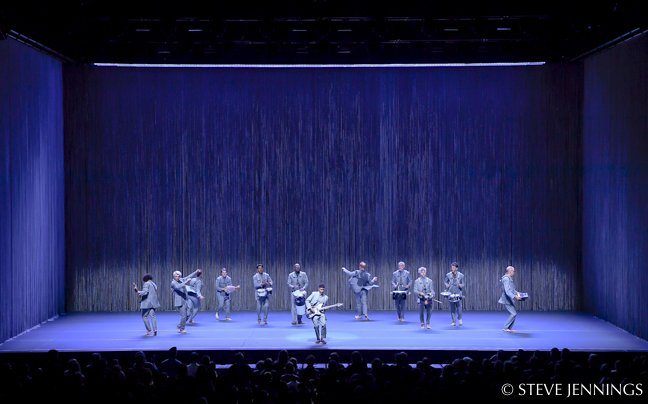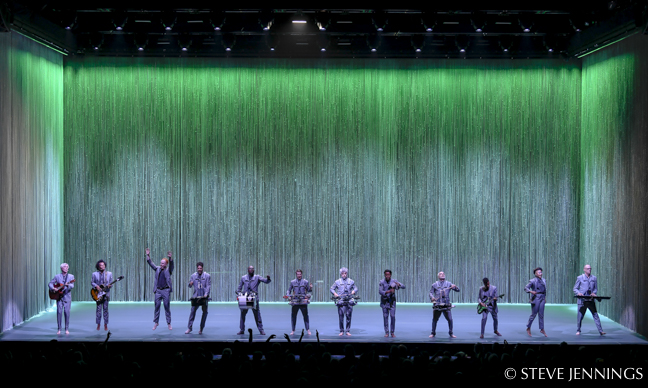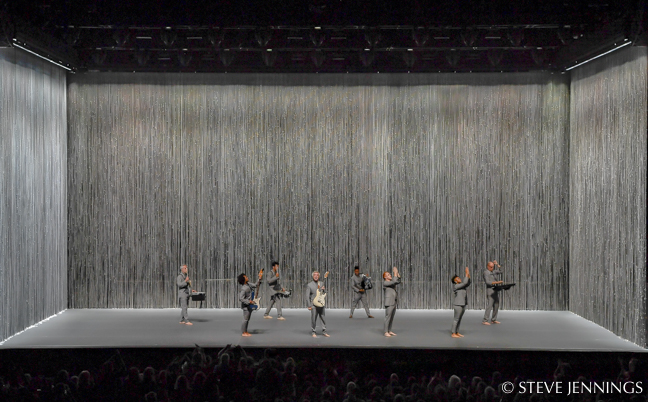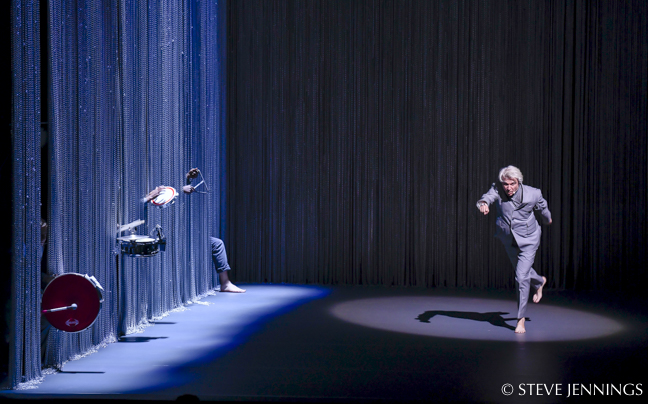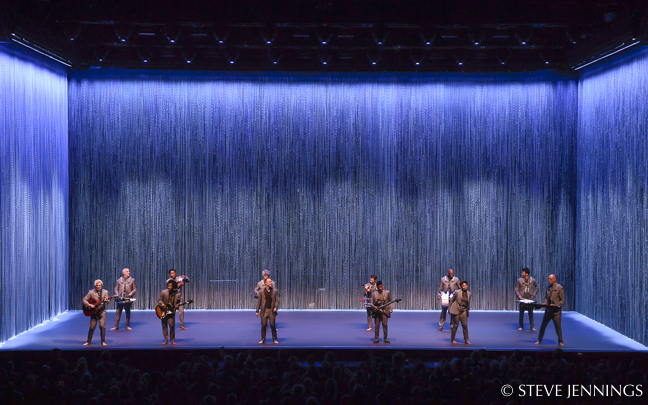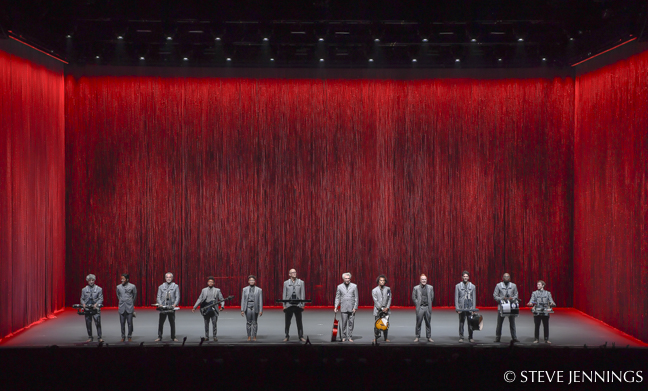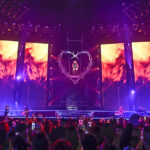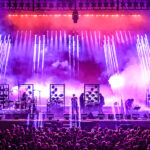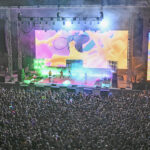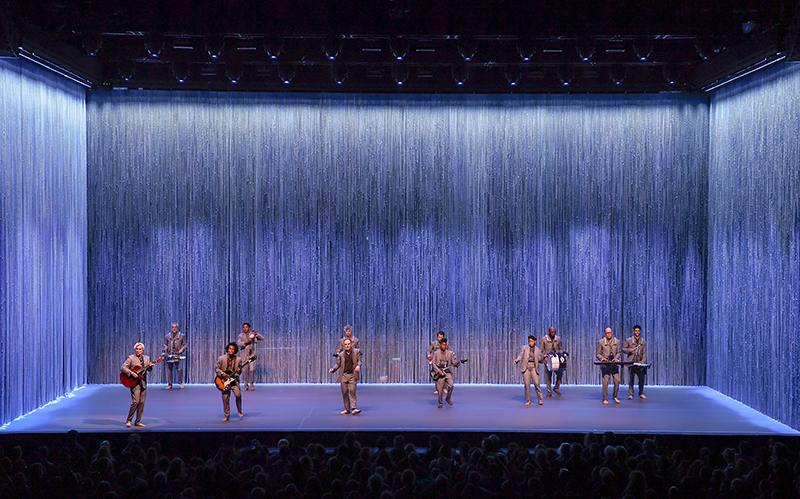
David Byrne’s American Utopia tour is one of the more talked-about shows by fans and crew alike for its throwback to Talking Heads’ iconic Stop Making Sense tour from the 1980’s. It serves as a simple, stark and dramatic counterpoint to the overly elaborate productions of many of today’s top touring artists. We spoke with the tour lighting designer Rob Sinclair and associate lighting designer and lighting director/programmer Douglas Green about the tour.
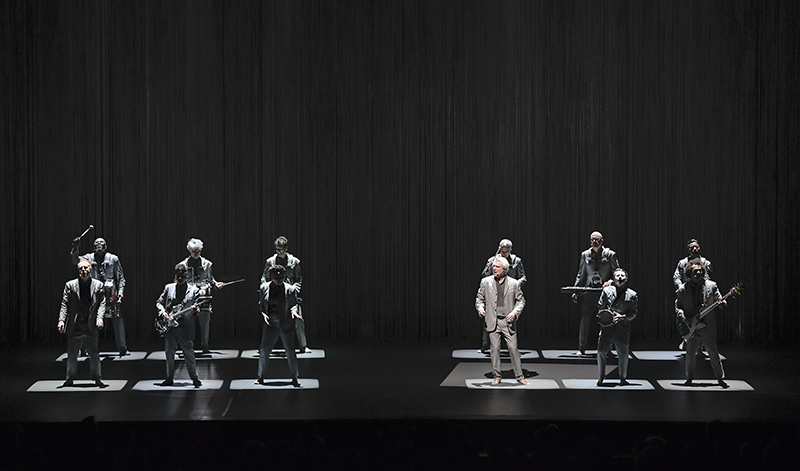
Rob Sinclair
Lighting Designer
Rob Sinclair says he was fortunate enough to be invited to meet David Byrne in early summer of 2017. The main constructs of the show were already in place — the empty stage, the mobile band, Annie-B the choreographer and the idea of making the show about human interaction rather than grand spectacle.
“Oddly David and I have never spoken about Stop Making Sense. It’s a film that has had a profound influence on my life and career but we wanted to move forwards and create something new rather than refer to the past.”
Choreographer Annie-B Parson and Sinclair had never met before, but quickly found a good way of working. “We’d do one of two things,” says Sinclair. “The more conventional approach where we’d light the action on stage, or we’d look through some ideas that David and I had worked on — we spent a very entertaining few summer days in Lititz, PA with some lights and chain curtain — and attach them to songs. So, movement informed lighting, and vice versa… it was a really fun process. We decided to try two things. First, to be a minimalist and only use cues that I absolutely needed, and secondly, to find arcs between songs. So the song before informs the song after, and the current song informs the one before and the one after.
We also only choose to use the least number of lights to do a job. Why use two when one will do. Usually when I visit a show I add cues… Whenever I come back to this one I remove them.”

Sinclair says the GLP X4 Bar 20’s were the obvious choice to light the chain curtain. “We have two rows of them so we can light top and bottom in different colors. They all have custom top hats made by Upstaging, so we don’t see the sources. The [Martin] MAC Vipers are all in the BlackTrax system. They’re versatile and refined — we can do a square wash, follow people and use subtle color. The LED Atomic give us a work light look and strobe only in the final chorus of one song. It’s a very flexible system, chosen to light people and objects and not for effect.”
The Scenic Chain Curtain (Snina Babylink) is amazing, Sinclair says. “It takes light beautifully and gives us an infinite number of entrances and exits. I knew before I first met David that we couldn’t use spotlights. It would have been a nightmare, and the cueing would never have been precise enough. I brought a BlackTrax beacon and stringer to our first meeting and described what the system could do. We then tried it out at our test week in Lititz and discovered lots of fun things to try. At the simplest, we can put any light on any band member at any time. At the most complex, we can allow David to be hemmed in by multiple lights and also create a custom ‘zone’ to allow musicians to step forwards at random and be lit whenever they are beyond a certain point on the stage.”
Sinclair worked with his old friend Oli Metcalfe (know as LD for the band Muse) and Dark Arts, providing the gear and programming the show. “Sam Augustus is our tech on the road. Between them, they hold a lot of the world’s knowledge of getting tracking systems on the road, and we couldn’t have made the show happen without them. Upstaging built us the custom shadow light. It’s the simplest possible source and is my favorite fixture ever. We just turn it on, and Annie-B creates the amazing shadows.
“David and Annie-B have been wonderful, gracious collaborators. Douglas Green, who programmed the lighting and is on the road, has been supportive and believed in this show from the start. Mark Edwards, the production manager, has put up with us all and our silly ideas with a wry smile. Upstaging and Neg Earth have provided great gear, support and people, as they always do. Robin Sheridan, our crew chief, has looked after Doug and I so well and is an essential member of the team.”
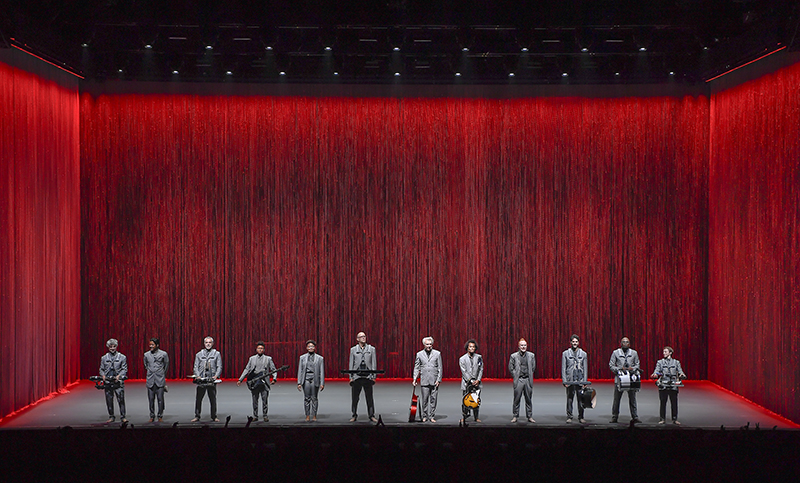
Douglas Green
Associate Lighting Designer, Lighting Director & Programmer
Douglas Green started the tour with a week of R&D towards the end of last year, where he made the basic file for the show. It was during this week that he worked out the main looks, rules and motivations of the lighting design. “We had most of the lighting rig there and experimented with BlackTrax, Pixel Mapping and practical light sources with David, showing him what the equipment was capable of and finding out what he found interesting. We were building up a catalog of ideas, without any songs in mind yet, that we would be able to draw from later in the process.”
During the two weeks of band and choreographic rehearsals, Green had a console and MA3D set up in a side room. He would watch a number, discuss ideas with David and Annie-B and then light it in previz. “We only had four days of production rehearsals and a lot of elements to rehearse other than the lighting, so it was really important to have something ready for every song before we got there. Those four days of production rehearsals were busy and long. Very much like a piece of contemporary dance, the lighting and choreography work together very closely, so we all had to move in sync through the creation process, and then stay late after everyone had left to fix and update things that couldn’t be done in the moment.
“Our first six shows after production rehearsals were billed as ‘previews’ and we continued to work and develop the show through all of these. We keep rehearsing the show even now, well into the tour — we always having lighting tweaks, choreography tweaks, and so sound check will often be a full technical rehearsal.”
Green says they had a relatively fixed set list from the beginning of rehearsals — some of the order changed and a couple of songs came and went, but for the most part the show has been fixed since Day One. “Instrument changeovers and choreography between songs are so complicated that it takes a lot of work to change the set. The lighting design of each song begins with the last cue of the previous one, so that the whole show feels like one continuous movement in light. I operate the whole show live — there is no timecode or any sort of triggering. We use features within BlackTrax to deal with some of the potentially impossible cueing challenges; it really is much more than just a straight replacement for followspots, but a creative tool that opens a whole new set of design opportunities. I have to say I love the music — the crowd’s response is religiously enthusiastic and engaged. It’s a real honor to be on tour with such an exquisite team of musicians and crew. David describes what we’re doing as a revolution, and being part of that makes the challenges and crazy schedule completely worthwhile.”
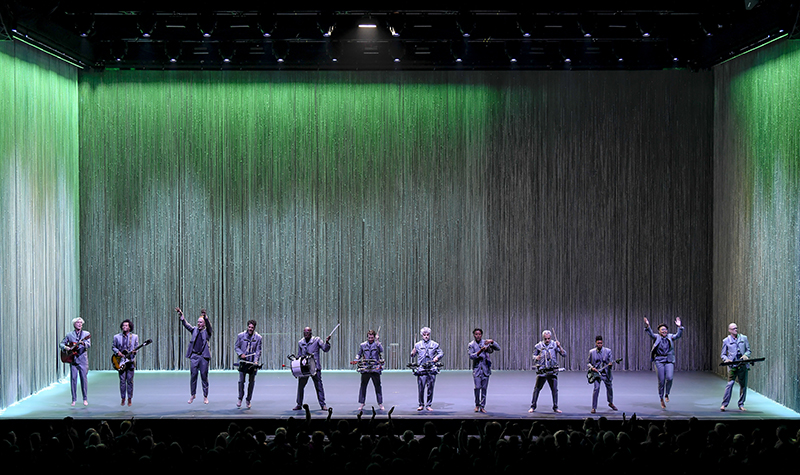
David Byrne American Utopia 2018 Tour
Crew
Lighting Designer: Rob Sinclair
Associate LD, Lighting Director & Programmer: Douglas Green
Lighting Co: Upstaging
Lighting Crew Chief: Robin Sheridan
Lighting Techs: Tony Quinn, Ben Root, Matt Flood
BlackTrax Programming: Dark Art Creative
BlackTrax Tech: Sam Augustus
Choreographer: Annie-B Parson
Choreographer Assistant: Elizabeth Dement
Tour Manager: Keith Anderson
Production Manager: Mark Edwards
Production Assistant: Sari Miller
Stage Manager: Peter Wills
Riggers: Bruce McLeod, David Oldham
Wardrobe Assistant/ Tour Photographer: Abigail Eva
Soft Goods: Upstaging
Gear
2 grandMA2 consoles
33 Martin MAC Viper Performances
60 GLP X4 Bar 20’s
4 GLP X4 Bar 10’s
8 GLP X4 S fixtures
5 ETC Source Four LED Series 2
Lustrs
1 1.2kW tungsten projector bulb/
reflector
1 BlackTrax BT Beacon System
1 Scenic Snina Babylink (Kriska
Decor) chain curtain
More David Byrne American Utopia tour photos by Steve Jennings:
